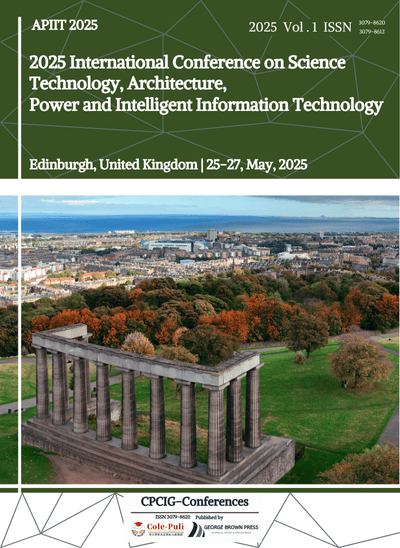Autonomous Driving Design Based on Deep Learning
DOI:
https://doi.org/10.71222/wk5qbc32Keywords:
intelligent vehicles, autonomous driving, path planning, machine vision, deep learningAbstract
In today's world, globalization and rapid technological progress are driving deeper urbanization. Along with the explosive increase in population and the number of vehicles, urban transportation systems face unprecedented challenges, including severe traffic congestion, frequent traffic accidents, and worsening air quality. According to international statistics, traffic accidents cause million deaths annually and result in direct economic losses exceeding 0.1 trillion USD. In this context, intelligent vehicle technology, especially autonomous driving cars, is widely regarded as one of the key technologies to alleviate these issues. This thesis delves into the application of deep learning and machine vision in intelligent vehicle systems, focusing particularly on their practical effects in path planning and obstacle recognition. By systematically analyzing and evaluating existing intelligent vehicle technologies, this paper proposes an innovative algorithmic solution that combines an enhanced A* search algorithm with advanced real-time image processing techniques. Experimental results demonstrate that this new algorithm significantly outperforms traditional methods in enhancing navigation efficiency and accuracy, providing a new solution for safe navigation of intelligent vehicles in complex environments. Moreover, this research not only advances the development of autonomous driving technology but also supports the theoretical and practical implementation of future intelligent transportation systems.
References
1. M. Ganesan, S. Kandhasamy, B. Chokkalingam, and L. Mihet-Popa, “A comprehensive review on deep learning-based mo-tion planning and end-to-end learning for self-driving vehicle,” IEEE Access, vol. 12, 2024, doi: 10.1109/ACCESS.2024.3394869.
2. M. Reda, A. Onsy, A. Y. Haikal, and A. Ghanbari, “Path planning algorithms in the autonomous driving system: A compre-hensive review,” Rob. Auton. Syst., vol. 174, p. 104630, 2024, doi: 10.1016/j.robot.2024.104630.
3. S. Teng, X. Hu, P. Deng, B. Li, Y. Li, Y. Ai, et al., “Motion planning for autonomous driving: The state of the art and future perspectives,” IEEE Trans. Intell. Veh., vol. 8, no. 6, pp. 3692–3711, 2023, doi: 10.1109/TIV.2023.3274536.
4. M. I. Pavel, S. Y. Tan, and A. Abdullah, “Vision-based autonomous vehicle systems based on deep learning: A systematic literature review,” Appl. Sci., vol. 12, no. 14, p. 6831, 2022, doi: 10.3390/app12146831.
5. L. Chen, S. Teng, B. Li, X. Na, Y. Li, Z. Li, et al., “Milestones in autonomous driving and intelligent vehicles—Part II: Percep-tion and planning,” IEEE Trans. Syst., Man, Cybern.: Syst., vol. 53, no. 10, pp. 6401–6415, 2023, doi: 10.1109/TSMC.2023.3283021.
6. B. B. Elallid, N. Benamar, A. S. Hafid, T. Rachidi, and N. Mrani, “A comprehensive survey on the application of deep and re-inforcement learning approaches in autonomous driving,” J. King Saud Univ.-Comput. Inf. Sci., vol. 34, no. 9, pp. 7366–7390, 2022, doi: 10.1016/j.jksuci.2022.03.013.
7. D. H. Lee and J. L. Liu, “End-to-end deep learning of lane detection and path prediction for real-time autonomous driving,” Signal Image Video Process., vol. 17, no. 1, pp. 199–205, 2023, doi: 10.1007/s11760-022-02222-2.
8. S. Abdallaoui, E. H. Aglzim, A. Chaibet, and A. Kribèche, “Thorough review analysis of safe control of autonomous vehicles: Path planning and navigation techniques,” Energies, vol. 15, no. 4, p. 1358, 2022, doi: 10.3390/en15041358.
9. P. S. Chib and P. Singh, “Recent advancements in end-to-end autonomous driving using deep learning: A survey,” IEEE Trans. Intell. Veh., vol. 9, no. 1, pp. 103–118, 2023, doi: 10.1109/TIV.2023.3318070.
10. F. Ye, S. Zhang, P. Wang, and C. Y. Chan, “A survey of deep reinforcement learning algorithms for motion planning and con-trol of autonomous vehicles,” in Proc. IEEE Intell. Veh. Symp. (IV), 2021, pp. 1073–1080, doi: 10.1109/IV48863.2021.9575880.
11. K. Gao, M. Gao, M. Zhou, and Z. Ma, “Artificial intelligence algorithms in unmanned surface vessel task assignment and path planning: A survey,” Swarm Evol. Comput., vol. 86, 2024, Art. no. 101505. doi: 10.1016/j.swevo.2024.101505.
12. X. Guo, N. Narthsirinth, W. Zhang, and Y. Hu, “Unmanned surface vehicles (USVs) scheduling method by a bi-level mission planning and path control,” Comput. Oper. Res., vol. 162, 2024, Art. no. 106472. doi: 10.1016/j.cor.2023.106472.
13. Y. Wang, C. Lu, P. Wu, and X. Zhang, “Path planning for unmanned surface vehicle based on improved Q-learning algorithm,” Ocean Eng., vol. 292, 2024, Art. no. 116510. doi: 10.1016/j.oceaneng.2023.116510.
14. L. Zhao, Y. Bai, and J. K. Paik, “Achieving optimal-dynamic path planning for unmanned surface vehicles: A rational mul-ti-objective approach and a sensory-vector re-planner,” Ocean Eng., vol. 286, no. 1, 2023, Art. no. 115433. doi: 10.1016/j.oceaneng.2023.115433.
15. Q. Gu, R. Zhen, J. Liu, and C. Li, “An improved RRT algorithm based on prior AIS information and DP compression for ship path planning,” Ocean Eng., vol. 279, 2023, Art. no. 114595. doi: 10.1016/j.oceaneng.2023.114595.
16. A. C. Dometios, X. S. Papageorgiou, A. Arvanitakis, et al., “Real-time end-effector motion behavior planning approach using on-line point-cloud data towards a user adaptive assistive bath robot,” Proc. IEEE/RSJ Int. Conf. Intell. Robots Syst. (IROS), Vancouver, BC, Canada, Sep. 24–28, 2017, pp. 5031–5036. doi: 10.1109/IROS.2017.8206387.
17. X. Zhou, M. Liu, E. Yurtsever, B. L. Zagar, W. Zimmer, H. Cao, et al., “Vision language models in autonomous driving: A survey and outlook,” IEEE Trans. Intell. Veh., 2024, doi: 10.1109/TIV.2024.3402136.
18. S. Teng, L. Chen, Y. Ai, Y. Zhou, Z. Xuanyuan, and X. Hu, “Hierarchical interpretable imitation learning for end-to-end au-tonomous driving,” IEEE Trans. Intell. Veh., vol. 8, no. 1, pp. 673–683, 2022, doi: 10.1109/TIV.2022.3225340.
19. Y. Cui, S. Huang, J. Zhong, Z. Liu, Y. Wang, C. Sun, et al., “Drivellm: Charting the path toward full autonomous driving with large language models,” IEEE Trans. Intell. Veh., vol. 9, no. 1, pp. 1450–1464, 2023, doi: 10.1109/TIV.2023.3327715.
20. J. Lu, L. Han, Q. Wei, X. Wang, X. Dai, and F. Y. Wang, “Event-triggered deep reinforcement learning using parallel control: A case study in autonomous driving,” IEEE Trans. Intell. Veh., vol. 8, no. 4, pp. 2821–2831, 2023, doi: 10.1109/TIV.2023.3262132.
Downloads
Published
Issue
Section
License
Copyright (c) 2025 Zetao Yu (Author)

This work is licensed under a Creative Commons Attribution 4.0 International License.



